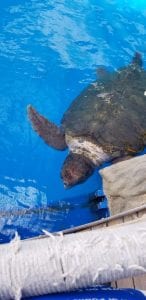

Today we had two great opportunities to visit the Instituto Cultural Steve Biko in the Pelourinho neighborhood of Salvador and attend an amazing show at Bale Folclorico Da Bahia. The Steve Biko Institute was created in 1992 by a group of Black students who were active in the Black movement. At the time only 2% of Afro-Brazilians were attending classes at federal universities. The visionaries of the Steve Biko institute saw this as a problem and wanted to raise the number of Afro-Brazilians in public universities by providing classes that would help prepare students for national exams required for entry into public universities. Steve Biko himself was a South African activist who fought against apartheid through education. He also created the black awareness movement and founded the South African Students Organization.
The Steve Biko Institute seeks to promote ‘Citizenship and Black Consciousness’ or CCN. CCN is a subject created to teach the history and importance of the African population in Brazil. This subject is meant to rebuild African history in Brazil and encourage Afro-Brazilian students to push themselves beyond the limits placed on them by a white-centric Brazilian society. Often public schools within Brazil do not teach all subjects required for the ENEM exam, a national exam used by the top 100 universities for entrance evaluation. The Steve Biko Institute combats the limitations placed on low-income Afro-Brazilian students by preparing their students for the ENEM exam, guiding them through any necessary registration processes, and offering computer access for students who need it. Additionally the institute offers talks from professionals to help guide students towards their career interests and has also established OGUNTEC, a science and technology initiative geared towards increasing the number of Afro-Brazilians in the STEM field.
While visiting the Instituto Cultural Steve Biko, we had the opportunity to hear from several students who are currently enrolled in classes at the institute. While a few were unsure of their future professional tracks, others mentioned that they wanted to be lawyers or work in the criminal justice field. It was awesome hearing about their future aspirations as well as learning about how they are navigating their current obstacles.
After visiting the Steve Biko Institute, we had time to walk around Pelourinho and by 8pm we were seated for Bale Folclorico Da Bahia. The origin of folklore within Brazil encompasses influences from the European (Portuguese), African, and Indigena (Indigenous) cultures. The show was a display of the Candomble religion in Brazil and showcased the symbolic personalities of each Orisha. I was able to identify some elements connected to different Orishas. Oxossi, the God of hunting, distinguished himself by displaying his power within a bow and arrow. Iemanja, the Goddess of the sea, was distinguished by her wave like movements and fluidity throughout the stage. The show was vibrant, animated, and it filled the entire room. The smooth sounds of the Yoruba singers created a familiar environment for me. The men playing capoeira during the show exhibited the rhythmic coordination needed for such an intense martial art. All in all it was a breathtaking experience that you cannot find anywhere else and I am thoroughly amazed by the authentic culture within Bahia, Brazil.



























